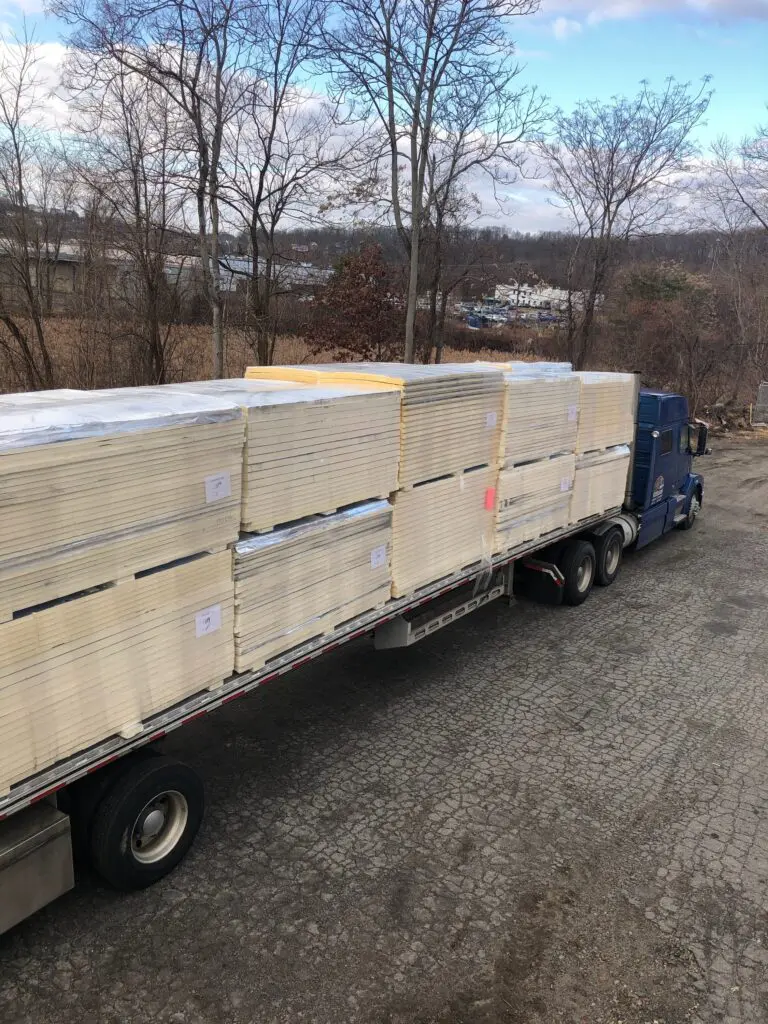
How Time Impacts the Insulation Performance of XPS, EPS, and Polyiso Foam Boards
Rigid foam boards—extruded polystyrene (XPS), expanded polystyrene (EPS), and polyisocyanurate (polyiso)—are widely used in home insulation for their excellent thermal performance and versatility. However, like all building materials, their insulation efficiency can degrade over time due to a few key factors. In this article, we’ll explore these factors and compare how they affect the long-term performance of XPS, EPS, and polyiso foam boards.
If you’re planning a large-scale insulation project, understanding how these materials hold up over time is essential to maximizing your home’s energy efficiency. Green Insulation, a leading supplier of reclaimed rigid foam boards in New England, can help you choose the right material for your project and deliver significant cost savings.
Thermal Drift: The Slow Loss of R-Value
Thermal drift refers to the reduction in a foam board’s R-value (insulating effectiveness) as the gases trapped within the foam cells slowly escape and are replaced by air. This phenomenon is most noticeable in polyiso and XPS foam boards, as both rely on low-conductivity gases to achieve their high initial R-values.
- Polyiso: Polyisocyanurate is the most affected by thermal drift. Its R-value can decrease significantly over time, especially in colder climates. Research shows that polyiso’s R-value can drop by up to 50% in temperatures below 15°F(Rmax, Alleguard). This makes it less suitable for cold regions, despite its high initial R-value at moderate temperatures.
- XPS: Extruded polystyrene experiences thermal drift at a slower rate due to its denser cell structure, but it still loses some R-value over time(GreenBuildingAdvisor).
- EPS: Expanded polystyrene, on the other hand, is less affected by thermal drift. Since it does not depend on gas trapping for its insulating properties, its R-value remains more stable over time (Alleguard).
Moisture Absorption: Insulation’s Hidden Enemy
Moisture is one of the biggest threats to insulation performance. When foam boards absorb water, their R-values decrease, and their structural integrity can be compromised, leading to mold growth and rot.
- EPS: EPS is the most susceptible to moisture absorption, particularly in below-grade applications. Over time, prolonged exposure to water can significantly reduce its insulating capacity (Green Insulation Group).
- Polyiso: Polyiso foam boards are somewhat prone to moisture absorption as well, though facers can offer some protection. If moisture penetrates, it can reduce the R-value and cause material degradation (Rmax).
- XPS: XPS has excellent moisture resistance, absorbing less than 1% of its weight in water. This makes it ideal for use in damp environments, such as foundations and basements, where maintaining R-value is critical(Green Insulation Group).
Temperature Sensitivity: Insulation in Cold Climates
Temperature fluctuations can have a significant impact on insulation materials, particularly in colder climates.
- Polyiso: Polyiso’s performance is highly temperature-dependent. While it boasts a high R-value at room temperature, its insulation efficiency drops sharply in cold environments. Studies show that polyiso panels can lose much of their R-value as temperatures fall below freezing (Green Insulation Group, Alleguard).
- EPS: EPS, by contrast, maintains a stable R-value across a wide range of temperatures, making it a more reliable option in cold climates (Alleguard).
- XPS: XPS performs well in both hot and cold climates, retaining a consistent R-value similar to EPS, though it offers slightly less stability in extreme cold (Rmax).
UV Exposure: Degradation from the Sun
Rigid foam boards are susceptible to UV degradation if left exposed to sunlight for extended periods. Over time, ultraviolet (UV) rays can cause the foam’s surface to become brittle, which affects both its insulating effectiveness and its structural integrity.
- XPS, EPS, and Polyiso: All three types of foam boards—XPS, EPS, and polyiso—are vulnerable to UV damage. If exposed to sunlight during construction or left uncovered, the surface of the boards can degrade, reducing their efficiency. To avoid this, it’s essential to cover foam boards with cladding or other protective materials as soon as possible (Green Insulation Group, Alleguard).
When choosing insulation materials, it’s important to consider more than just the initial R-value. Factors such as thermal drift, moisture absorption, temperature sensitivity, and UV exposure can significantly impact the long-term performance of XPS, EPS, and polyiso foam boards.
- Polyiso is an excellent choice for warmer climates but may lose its effectiveness in cold or moist environments due to thermal drift and moisture absorption.
- XPS is ideal for high-moisture areas, such as basements or foundations, thanks to its superior moisture resistance and stable R-value in varying temperatures.
- EPS offers a cost-effective, stable option across a wide range of temperatures, but it’s less suited to areas with high moisture exposure.
 To ensure you get the best performance and value out of your insulation project, consider using reclaimed rigid foam boards from Green Insulation. Our high-quality reclaimed insulation panels offer the same durability and effectiveness as new materials, but at a fraction of the cost—and with a much lower environmental footprint. Contact us today to learn how we can help you reduce your energy bills and make your home more sustainable.
To ensure you get the best performance and value out of your insulation project, consider using reclaimed rigid foam boards from Green Insulation. Our high-quality reclaimed insulation panels offer the same durability and effectiveness as new materials, but at a fraction of the cost—and with a much lower environmental footprint. Contact us today to learn how we can help you reduce your energy bills and make your home more sustainable.
